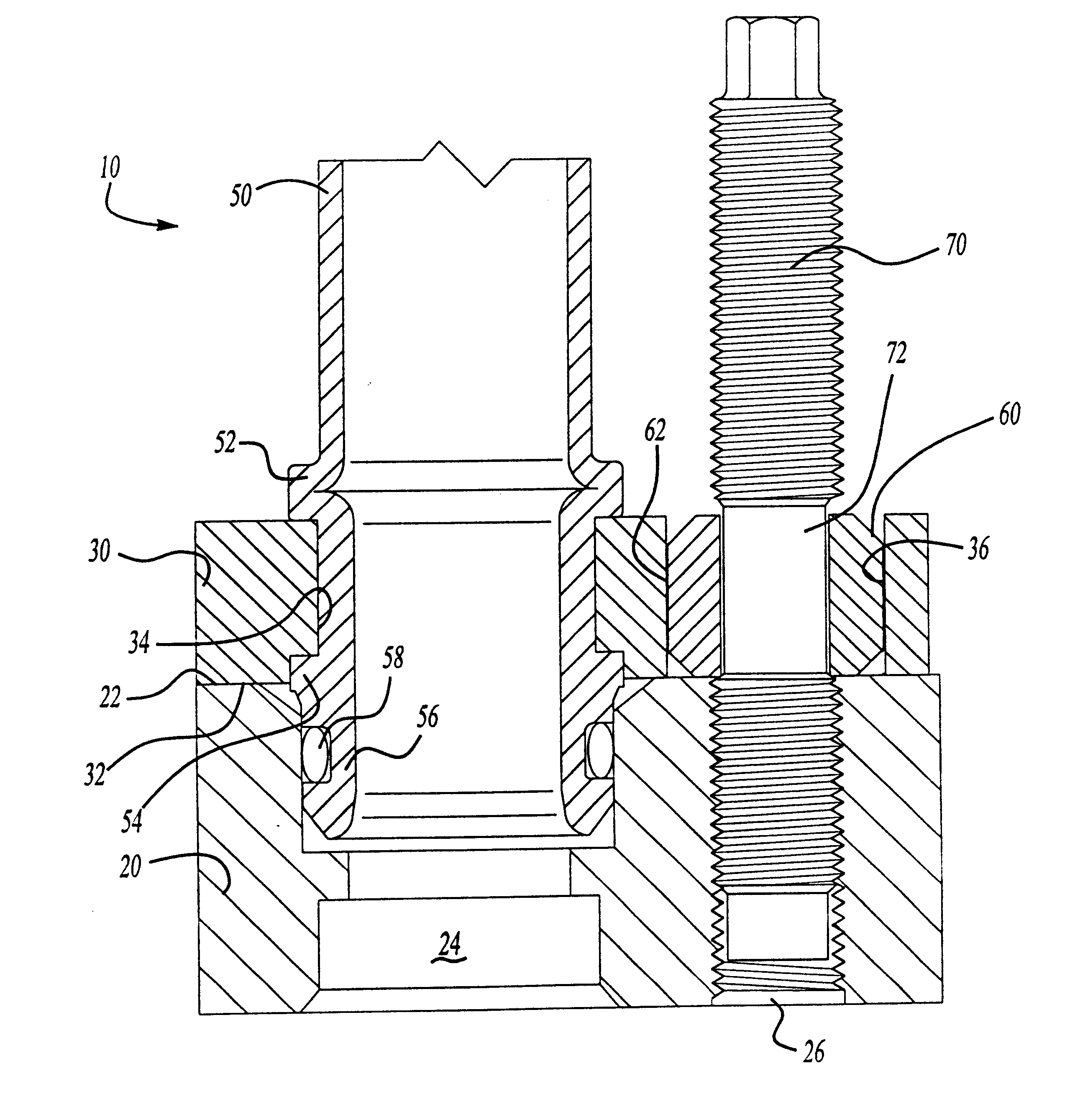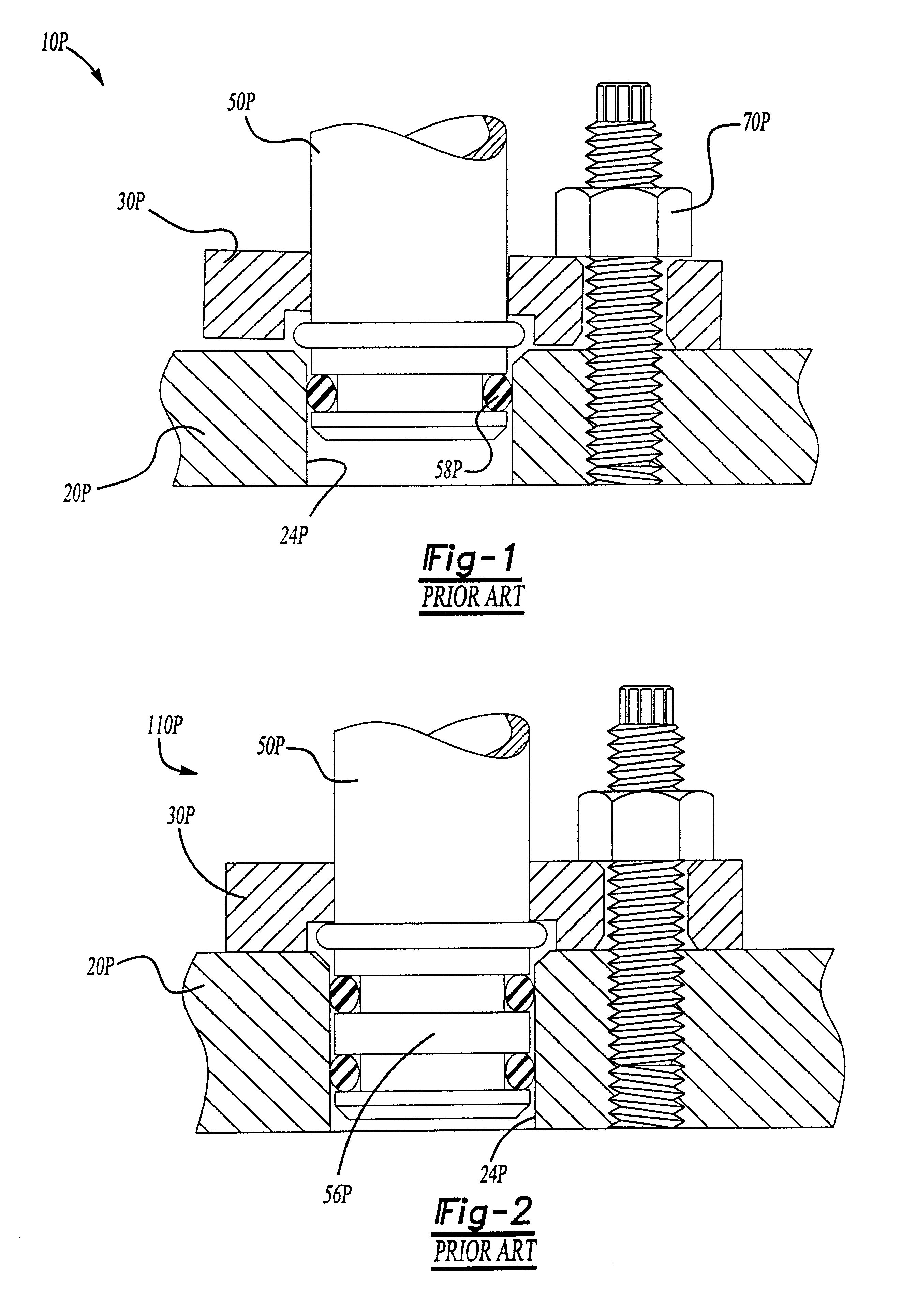Block-conduit connection alignment device
a technology of connecting device and connecting conduit, which is applied in the direction of hose connection, transportation and packaging, branching pipes, etc., can solve the problems of insufficient assembly speed, too time-consuming, and more susceptible to leakag
- Summary
- Abstract
- Description
- Claims
- Application Information
AI Technical Summary
Benefits of technology
Problems solved by technology
Method used
Image
Examples
Embodiment Construction
[0023]In general, a block conduit connection is disclosed that incorporates an alignment device that permits square alignment between a conduit and a port in a housing. While the present invention will be described in detail with respect to fluid components, the alignment device is also well suited for use with other types of conduit where a seal is important.
[0024]Referring now in detail to the Figures, and particularly to FIGS. 3 and 4, there is shown a novel block conduit connection 10 according to the present invention. As shown in FIG. 4, the block conduit connection 10 includes a housing 20 having a mounting surface 22 thereon and a conduit port 24 therein that is square, or at a right angle, to the mounting surface 22. Laterally offset from and substantially parallel to the conduit port 24 is a threaded fastener port 26. The housing 20 can be a portion of a refrigeration component such as a compressor, accumulator, or the like. The block conduit connection 10 further includes...
PUM
 Login to View More
Login to View More Abstract
Description
Claims
Application Information
 Login to View More
Login to View More - R&D
- Intellectual Property
- Life Sciences
- Materials
- Tech Scout
- Unparalleled Data Quality
- Higher Quality Content
- 60% Fewer Hallucinations
Browse by: Latest US Patents, China's latest patents, Technical Efficacy Thesaurus, Application Domain, Technology Topic, Popular Technical Reports.
© 2025 PatSnap. All rights reserved.Legal|Privacy policy|Modern Slavery Act Transparency Statement|Sitemap|About US| Contact US: help@patsnap.com



